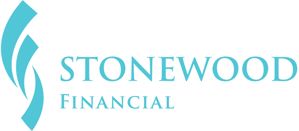How do you convey your message to a client without seeming “needy” in the process? By understanding how clients think!
Clients give referrals for two possible reasons. First, they want to help you grow your business. Second, they want to help friends and loved ones. Of these two reasons which one do you believe is a strong reason to give you a referral? If you said to help friends and loved ones, then you are right!
Where the traditional referral asking process, the “who do you know question”, fails, is because it is completely advisor-centered. It revolves around the fact that you are asking your client to help you build your business. It puts the client in an awkward position because no matter how they answer, they run the risk of offending someone.
Let’s take a look at the Client-Centered Referral Dialogue by understanding the questions as well as the reasoning behind the questions:
Question 1: Has this been helpful?
The first question is designed to do two things. First, it is a closed-ended question designed to elicit a “yes” or “no” response. The reason we ask in this way is to let the client definitively admit that they have been helped and second, to identity any shortcomings before continuing with the process. In other words, if they do not feel that they have been helped we need why and how they want to be helped.
Question 2: How has this helped you the most?
The second question has three important key elements to it. First, it is an open-ended question designed to elicit more dialogue to get the client to open up. Second, when you allow the client to explain their perception, you can later restate their answer to position it as the reason why they want to help others. Third, the word “most” is a presupposition that you have helped them in more than one way and that you are merely curious to unearth the most important way(s) that you have helped!
Question 3: How do you feel?
The third question is very powerful! It helps link a positive emotion to the value that the client places on your products and services. When we link the two (positive emotions and your value) we are changing the way they view you! Then, you can also restate their answer to position it as the reason why they want to help others.
Question 4: Who would you like to help feel________ because they have ________?
The fourth question actually shifts the conversation from you asking about them to you asking about someone they care about. This allows the client to focus on helping others feel the way they do because they are receiving your products and services. When you incorporate their answers about how they feel and the reason why they feel the way they do about your products and services, you are restating your value by telling them what they said when they answered earlier questions.
Question 5: Some people like to help their parents, siblings, or best friends. You mentioned your ______ who you _________ with, would you like to help _______?
The fifth question is designed to help the client determine if someone that they have specifically talked about in the past is someone that they want to help in the future. If it is they will be open to making an introduction. This question will instantly get the client to think about that person. It will most likely strike up a conversation regarding who this person is and if the client wants to help them by introducing you.
How to Make the Introduction
Getting the name of someone the client cares about is one thing but getting an introduction to them is another. Oftentimes, a client might say, “I will have to ask them if they are interested.” When this happens it’s important to keep the conversation flowing by making the introduction easy for them.
Why the Client-Centered Referral Dialogue Works
The reason the Client-Centered Referral Dialogue works is that it appeals to the reason people give referrals: because they want to help those they love and care about. So, the next time you want a referral use these client-centered referral questions to make a better connection with your clients.
This content comes from NAIFA partner, Advisor Solutions. You can read the original article on their website.












